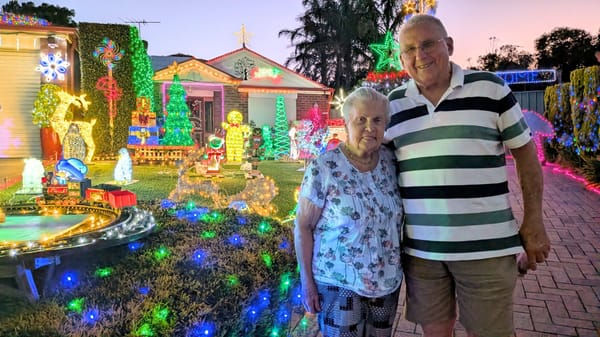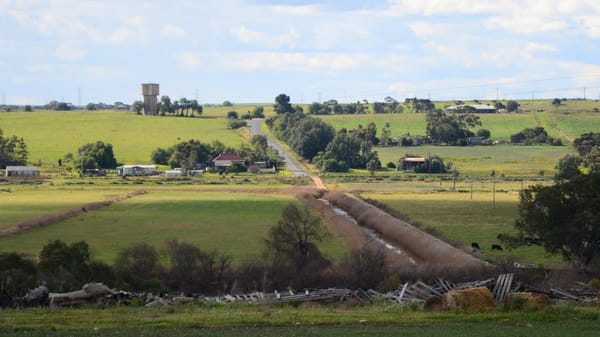New Murray Bridge aged care facility Romani has respectful launch
RSL Care SA has honoured the sacrifices of war animals, particularly horses, at the launch of a $22 million residential aged care facility on the National Day for War Animals.

This sponsored post is brought to you by RSL Care SA.

RSL Care SA has honoured the sacrifices of war animals, particularly horses, at the launch of a $22 million residential aged care facility on Friday, the National Day for War Animals.
This gesture is typical of the respect the Romani facility – on Tumbella Drive, Murray Bridge – shows for animals, history and its current and future residents.
RSL Care SA CEO Nathan Klinge is passionate about the role of animals who have been in service.
He believes that the horse theme which runs through the décor, photos, statuettes and prints at Romani has special meaning for many of Romani’s residents.
“This region is the residents’ home, and many of them grew up here with horses, so the theme of horses is connected,” he said.
After Mr Klinge spoke of the history behind the name Romani – a World War I battle at the Suez Canal – the Governor of South Australia, Frances Adamson, endorsed the new facility.
“It is often said that a society is judged by how it cares for its most vulnerable,” she said.
“This faculty is a welcome addition to services available in the region.
“There is comfort in knowing that loved ones will be looked after in a place that offers impressive accommodation, services and enrichment.
“I commend the RSL Care SA for helping to meet a broader and emerging need in the spirit of supporting the community.”

Her Excellency and RSL Care SA chair Geoff Tattersall unveiled the official Romani plaque, along with a metal sculpture of the most famous and heroic Australian horse of WWI, Bill the Bastard.
The statue of Bill and his rider, Major Michael Shanahan, sits in the main courtyard and contrasts well with the calming purple flowers in the background.
The Governor jokingly referred to him as “Bill, the steed with an unflattering name”.
Bill the Bastard was so named because he would refuse to let anyone ride him except Michael Shanahan.
Michael’s grandson, Terry Shanahan, flew from Queensland to speak at the Romani launch; he mentioned details about horse and rider and the love they had for each other.
Mr Shanahan told of how his grandfather wanted to get Bill from his good mate, fellow Light Horseman and famous author Banjo Patterson.
“Nah, you can’t have him,” Mr Patterson said to Major Shanahan.
“Nobody can ride him, and I’m making a lot of money because they have a rodeo every now and then.”

“Anyway, Grandad persisted and used every opportunity to go and visit Bill, and he would run his hands over him and talk to him quietly, and every now and then Grandad would give him a liquorice allsort.”
Eventually, Bill allowed Major Shanahan to ride him and even saved his life by taking him to the veterinary tent after the Major was shot through the leg in the Battle of Romani.
The mutual respect the man and horse had for each other matches well the respectful atmosphere at Romani.
This plays out at Romani in the elegant and spacious feel of the facility, along with touches such as nameplates with purple poppies on residents’ doors, as well as memory boxes.
RSL Care SA’s chief operations officer, Kellie Whelan, explained the purpose of the memory box – a glass cabinet outside each resident’s room that displays something the resident values, be it war medals or a hand-made clown.
“Memory boxes help give some direction to residents who have a cognitive impairment, and for the others, it personalises things on display, and they can change it as they want; it’s like how you personalise your front yard,” she said.
The memory boxes are another sign that the residents at Romani are seen as individuals and not just numbers.
For Nathan Klinge, it’s important that people, animals and even important battles such as Romani aren’t forgotten.
“The Battle of Romani is a battle that might have been forgotten – it’s our chance as a regional centre to see that it’s not forgotten,” he said.
To commemorate the battle and Light Horse history, Romani has named its three residential wings after General Henry Chauvel, who commanded the 1st Light Horse Division at Romani; Taffy, another loyal horse in the battle; and the capture of Beersheba.
There’s even a coffee shop named after Mr Patterson.
Mr Klinge said that people sometimes struggled with how to say the word “Romani”; Mr Shanahan joked that in Northern Queensland, they said “Rom and I”.
Although the name Romani may be difficult for people to say, and Bill the Bastard is the name that people sometimes don’t want to say, the simplest way to refer to Romani is the word respectful.
- More information: Visit www.rslcaresa.com.au or email romani@rslcaresa.com.au.

Interested in advertising with Murray Bridge News? We can help you reach thousands of highly engaged local readers. Call Jane Intini on 0418 835 768 or email jane@murraybridge.news.






